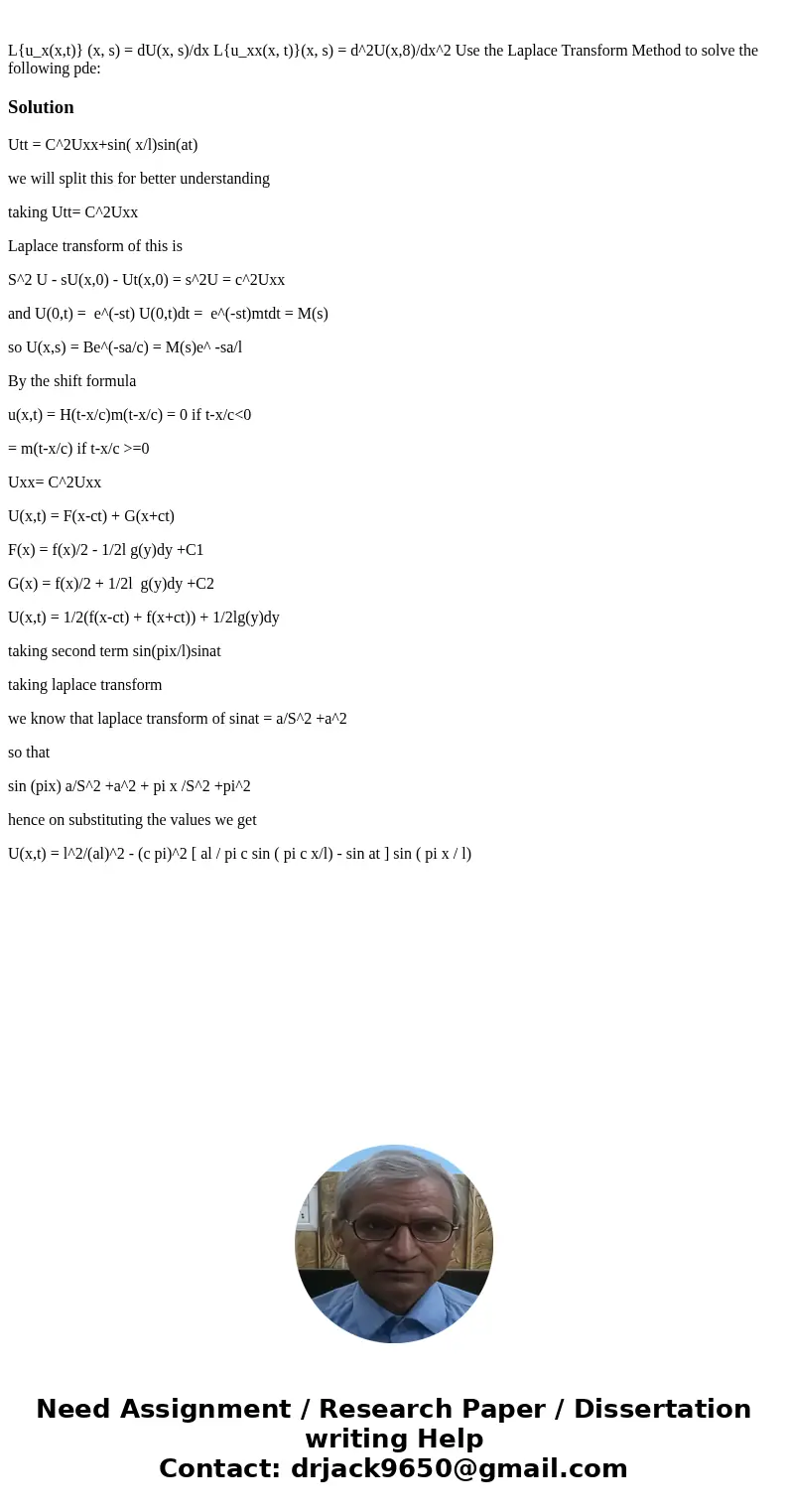Luxxt x s dUx sdx Luxxx tx s d2Ux8dx2 Use the Laplace Tran
Solution
Utt = C^2Uxx+sin( x/l)sin(at)
we will split this for better understanding
taking Utt= C^2Uxx
Laplace transform of this is
S^2 U - sU(x,0) - Ut(x,0) = s^2U = c^2Uxx
and U(0,t) = e^(-st) U(0,t)dt = e^(-st)mtdt = M(s)
so U(x,s) = Be^(-sa/c) = M(s)e^ -sa/l
By the shift formula
u(x,t) = H(t-x/c)m(t-x/c) = 0 if t-x/c<0
= m(t-x/c) if t-x/c >=0
Uxx= C^2Uxx
U(x,t) = F(x-ct) + G(x+ct)
F(x) = f(x)/2 - 1/2l g(y)dy +C1
G(x) = f(x)/2 + 1/2l g(y)dy +C2
U(x,t) = 1/2(f(x-ct) + f(x+ct)) + 1/2lg(y)dy
taking second term sin(pix/l)sinat
taking laplace transform
we know that laplace transform of sinat = a/S^2 +a^2
so that
sin (pix) a/S^2 +a^2 + pi x /S^2 +pi^2
hence on substituting the values we get
U(x,t) = l^2/(al)^2 - (c pi)^2 [ al / pi c sin ( pi c x/l) - sin at ] sin ( pi x / l)

 Homework Sourse
Homework Sourse